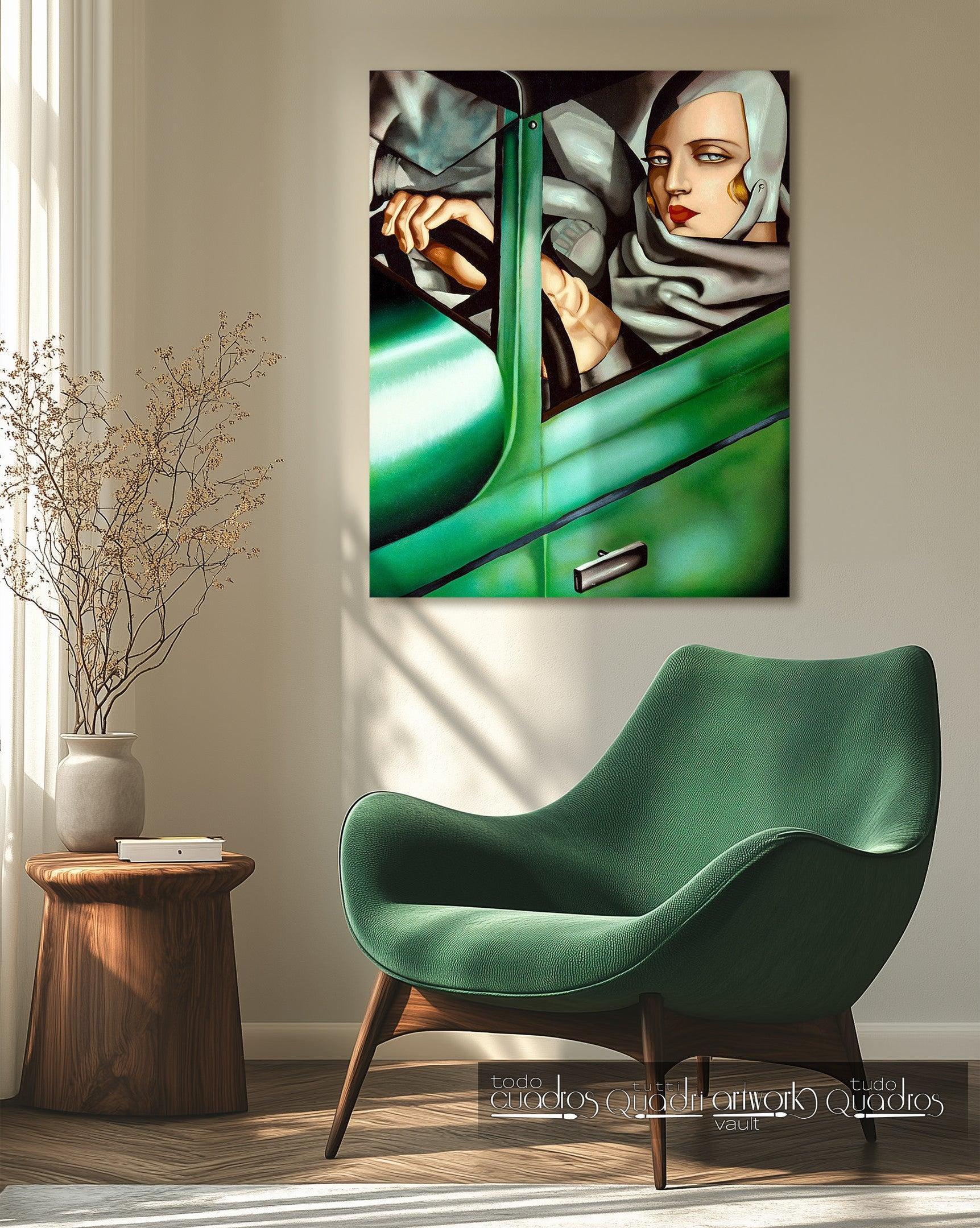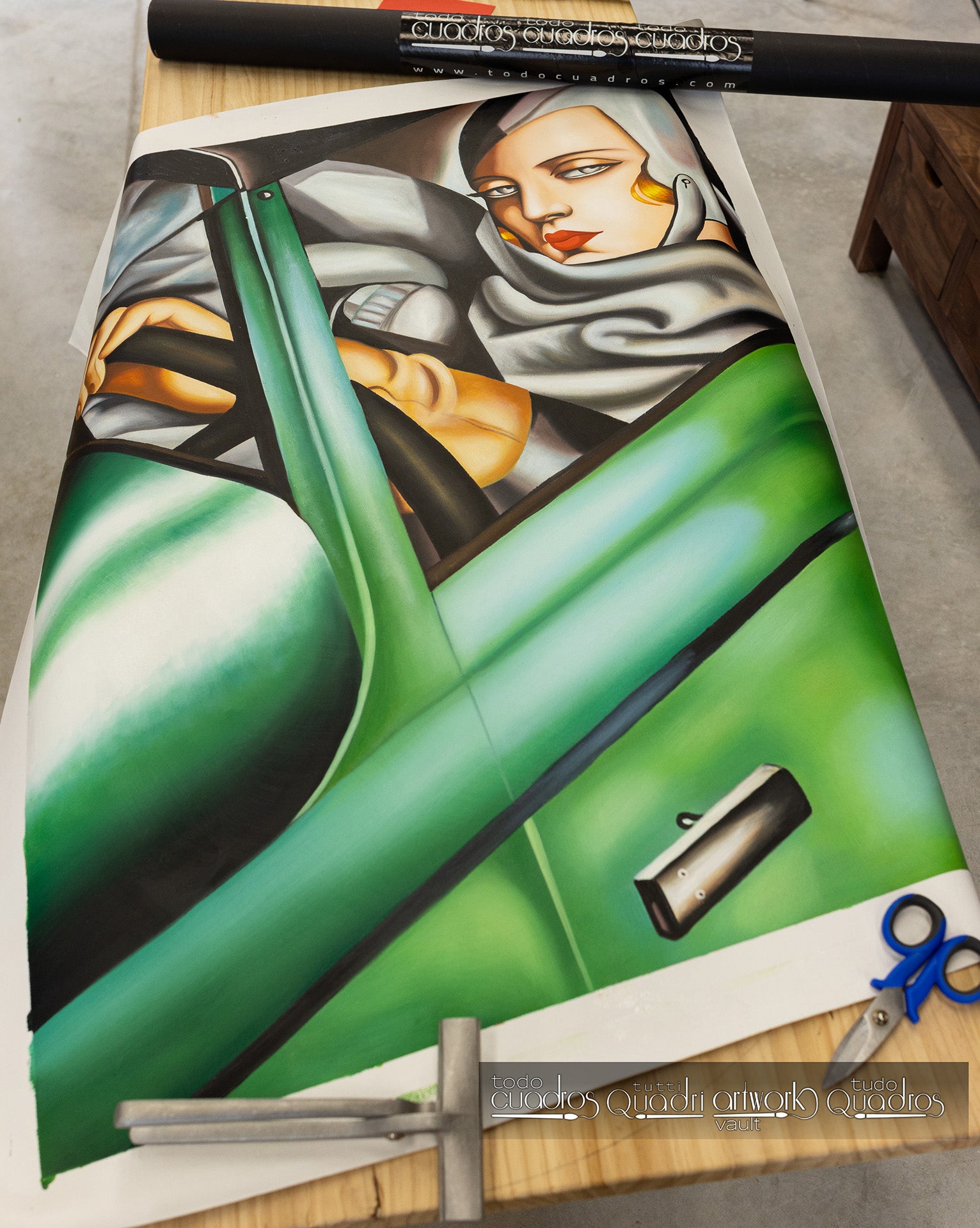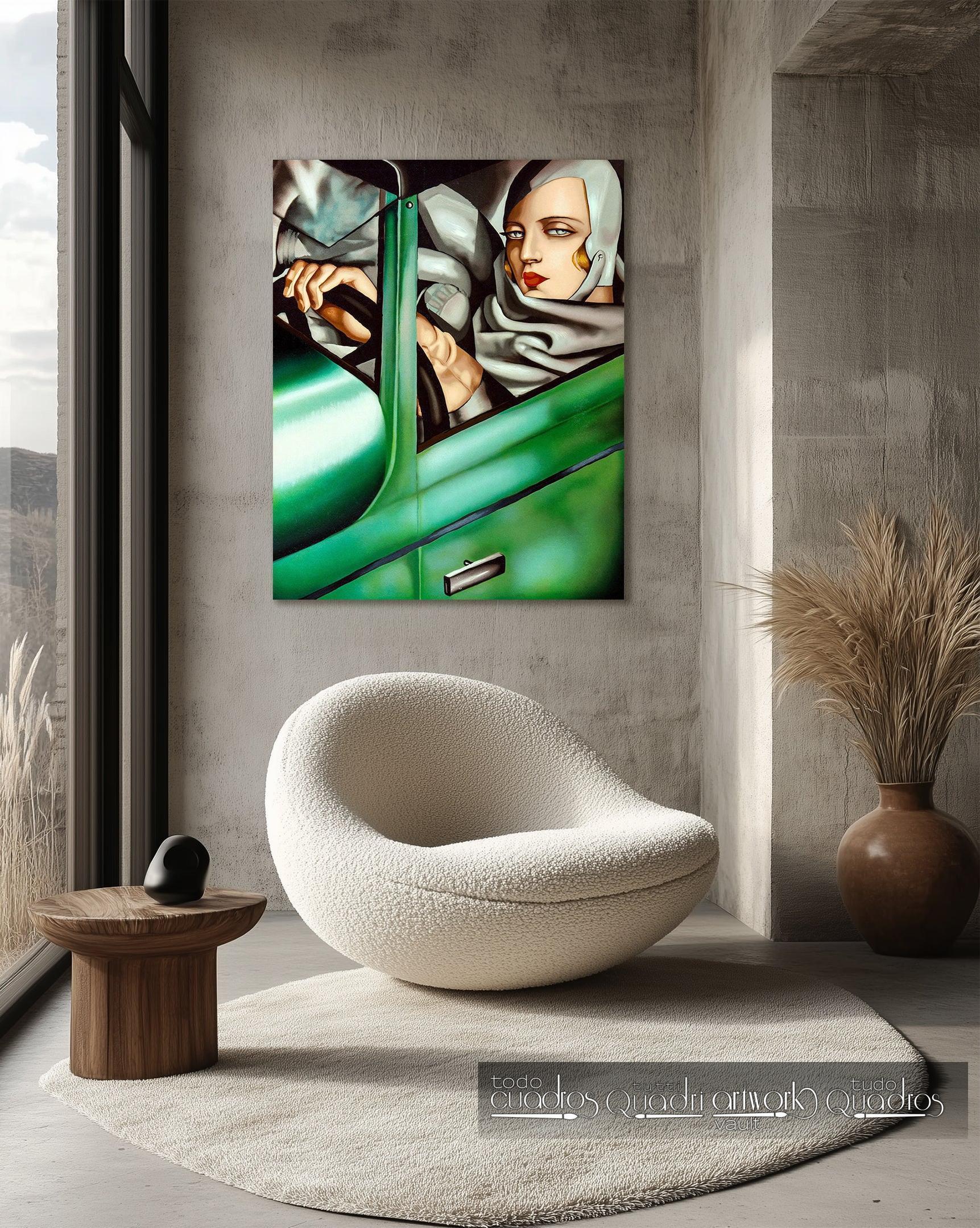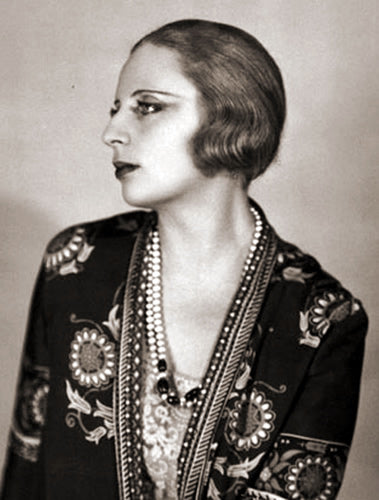




Autoportrait (Tamara in a Green Bugatti), Lempicka
- Oil on linen canvas
- 100% hand-painted
- Reproduction painting
- Available for online purchase
- See quality
- Shipping to the US
- Money-back guarantee
- Customer reviews
| Author: | Tamara de Lempicka |
|---|---|
| Type: | Painting |
| Style: | Art déco |
| Medium | Oil |
| Support: | Canvas |
| Year: | 1929 |
| Genre: | Retrato |
| Subject: | City life |
| Located: | Private Collection, Switzerland |
The painting presents a close-up view of the interior of a green Bugatti sports car. Lempicka depicts herself at the wheel, with a firm and distant gaze, wearing a helmet and a leather coat that reflect the fashion and mechanical spirit of the time. Her brown glove and the metallic folds of her jacket seem to extend the car’s bodywork, merging the female figure with the machine in a harmony of aerodynamic lines and cool chrome.
From a technical perspective, the work is a masterful example of the Art Deco style: precise composition, sharp contours, and a controlled palette of greens, grays, and silvers. The sculptural treatment of the face reveals Lempicka’s fascination with geometry and formal perfection. Every brushstroke suggests movement and speed, yet also total control over both.
Here, Tamara paints herself as a modern heroine: confident, elegant, and untouchable. The car—an object of masculine desire—becomes a metaphor for autonomy and power. She does not pose; she drives. She does not look at the viewer; she asserts herself.
Ninety years later, this image remains a constant reference for photographers, designers, and fashion brands who recognize it as a timeless icon of elegance and strength. In an era where aesthetics and speed continue to shape visual culture, Lempicka’s “Green Bugatti” endures as a clear representation of female autonomy and power in modern art.
"Self-Portrait in the Green Bugatti" (1929) is undoubtedly the most iconic work by Tamara de Lempicka, a pictorial declaration of independence, luxury, and modern femininity. Originally conceived for the cover of the German magazine Die Dame, the painting became a visual manifesto of the new woman of the 1920s: elegant, autonomous, and in control of her own destiny.
Choose options







